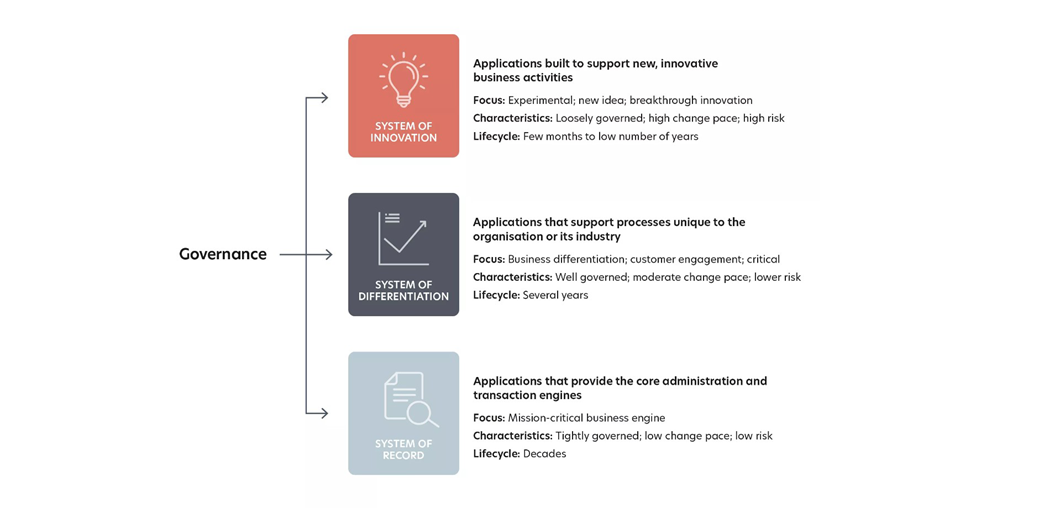Platform consolidation
A key parameter for being able to launch solutions in a time-to-market manner is avoiding a forest of applications that basically all have the same or overlapping features. Businesses should thus work on consolidating systems and platforms to make it easier to initiate digital projects that utilise the potential of the application landscape.
If there is only one system for browser-based communication towards customers, one solution for internal communication, one internal collaboration tool, one CRM and so on, there will be no discussion about what to use and how to use it. In this scenario, it is possible to launch small, fast, MVP-based development sprints, so it is possible to release new services and solutions at a high pace. This is why the consolidation of platforms and systems is decisive for the pace of innovation.
Initiating expensive infrastructure projects as a condition for pace of innovation is not recommended. The architecture strategy with the to-be scenario and launching wide-ranging consolidation projects as an end in itself will never be approved by an investment board, since the business case for such infrastructure projects usually is poor. There is no return on investment (ROI) if these activities are not incorporated as part of commercial, ROI-driven projects initiated by the business units.
In most cases, corporations and organisations can incorporate their activities in the commercially-driven projects that nevertheless have to be executed. Naturally, some determination at executive level is required to shut down systems that do not fit into the strategy, or which are unnecessary, because the business is going to focus on other systems. The process of taking the hard, but necessary decisions can easily be part of these commercially driven projects.
Consolidation
Once the business has defined its strategy for the architecture, and defined a to-be application landscape around its reference points with the aim of enhanced pace of innovation, work is needed to consolidate the platforms.
By mapping every tower, we know which systems are in use in each tower, and hopefully it also becomes possible to identify any shadow IT that might exist.
By considering cloud vs on-premise, best-of-breed vs best-of-suite, and the running and development costs per application in each tower, the business will have gained a good idea of which card in each tower it wants to focus on. The process of consolidating its activities on a few, strong applications can then be planned.



